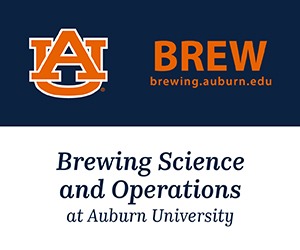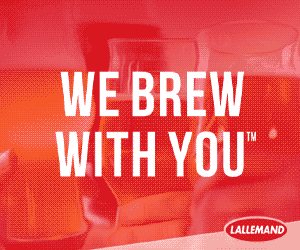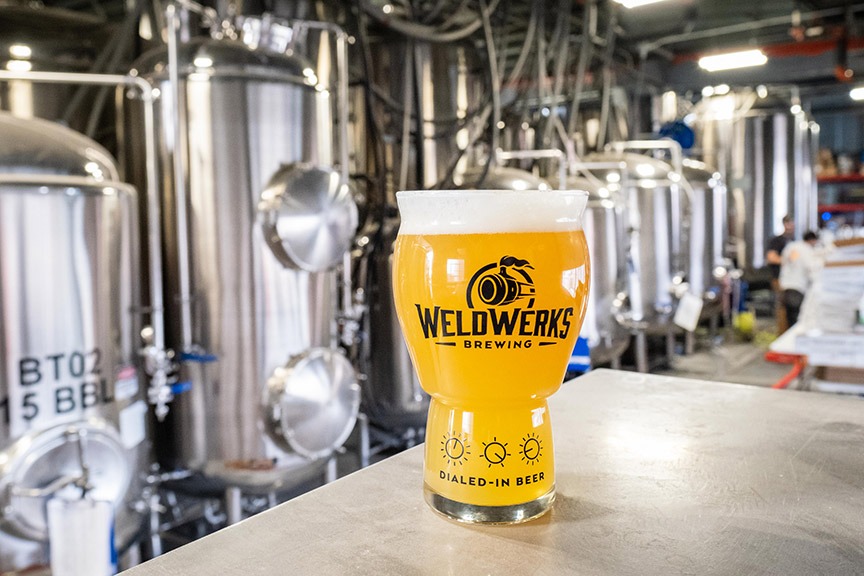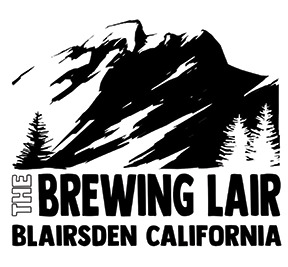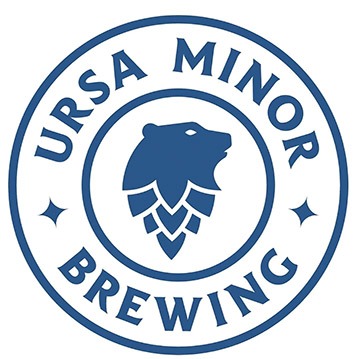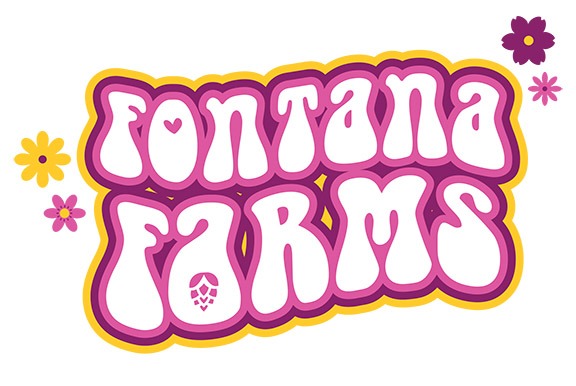Frost Beer Works
Dear Replicator, Fall Ale from Frost Beer Works holds a special place in my heart. Instead of a traditional honeymoon, my husband and I opted for a “beermoon” in which we toured breweries in New Hampshire, New York, and Vermont in the fall of 2015. It was a great trip! We stumbled across Frost Beer Works in Hinesburg, Vermont, where Fall Ale really stood out. It tasted like taking a bite out of a crisp pile of leaves on a bright Vermont, autumn day — in the best way! The beer has since been retired, but I would love to brew it myself to remind us of that time.
Staci Oswald
Granville, New York
Most breweries geek out on developing recipes, refining process efficiencies, and helping educate consumers on the nuances of the many, many different beer styles available today. But at Frost Beer Works, located in the small town of Hinesburg, Vermont, with a population below 5,000 people, that level of dedication doesn’t stop with the beer itself.
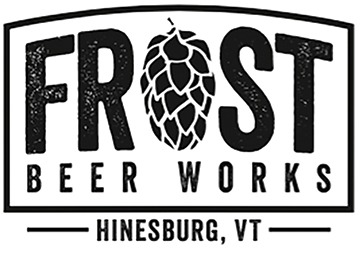
Frost, founded in 2014 by homebrewer Garin Frost, went so far as to develop its own in-house software management system for tracking the business’s brewing, packaging, inventory, and distribution. Their homebrewed automation software plays a significant role in enabling Frost to manage four brews per day with only two employees in the brewhouse at a time. But it’s not the whole story — the technological geekery doesn’t stop with software. Frost also utilizes a dedicated dry hop machine, a centrifuge, equipment for oxygen testing in packaged product, miscellaneous lab equipment for beer analysis, and an Aber Perfect Pitch to maximize fermentation consistency.
Steven Nelson, Brewer and Operations Manager at Frost, is amazed by the efficiency of the operation himself. “I find the best example of what we’re able to do at Frost Beer Works is our production output: We packaged 7,329 barrels of beer last year with five production employees on a 10-bbl system.”
These numbers are indeed impressive — many breweries with a 10-bbl brewhouse produce only a few hundred barrels of beer per year.
Nelson says the focus on efficiency frees the brewery up from having to worry too much about chasing market trends. While Frost’s lineup is led by hazy IPAs, the brewery produces a number of different styles, and ultimately tries to stick to its strengths of always refining and ever improving, regardless of style.
“We’re really not too focused on new trends, as illustrated by our rather minimalistic branding,” Nelson says. “We put our efforts towards improving on what we do well and being able to do it better every time. That being said, within our hazy IPA portfolio, we do have a line of Research Series beers where we experiment with different hop blends, grain bills, and yeast blends.”
Other experiments in the brewery’s past include various riffs on seasonal styles. One such beer, Fall Ale, became something of an underground hit in the Green Mountain State. Described as “a multigrain harvest ale with malt-forward flavors,” the beer deviated from its highly-spiced autumnal cousins and instead went in the direction of a classic strong ale, brewed with Simpsons Golden Naked Oats®, crystal rye, and malted barley from a local maltster. This unique assemblage of grains imparted toasty, bread crust flavors, a smooth caramel sweetness, and a deep, structured body.
Nelson remains a fan of maltier styles, describing himself as “someone who enjoys stouts in the summer.” However, as many brewers have observed in recent years, seasonal styles often struggle within the current distribution paradigm, where distributors by-and-large simply prefer to stock up on hazy IPAs.
Frost has experimented with several malt-forward seasonal options over the years, playing with ingredients like maple syrup and rye to add a local spin to classic styles. Additionally, Frost takes the opportunity to reuse barrels to create even more variety within its lineup.
“We send about twelve barrels of our Heavy Imperial Stout base beer into freshly emptied local Bourbon barrels yearly for a barrel-aged stout release,” Nelson says. Once those barrels have been emptied of stout, the brewery refills the barrels with another rotating beer style that ages over the summer in order to maximize the use of the wood and release a unique beer for the fall.
“We’ve focused our tinkering efforts on creating consistency with all the beers we make, which actually is less so on the recipe development side,” says Frost. “We focus more on yeast pitching accuracy, aeration, oxygen contamination prevention, packaging quality, and production practices to reduce the amount of labor and effort required, putting us in a position to produce the maximum amount we can in our facility.”

Frost’s highly efficient setup serves as a reminder that brewing is ultimately a business, and given the market, a business that needs to operate as efficiently as possible. This lean approach to brewing means not every beer gets to stick around — and some fan favorites, like Fall Ale, have to be retired. But that, of course, only creates the opportunity for another enticing challenge for the curious homebrewer.
One feature of Frost’s Fall Ale that will provide an extra avenue of experimentation for homebrewers was the use of local malts. Fall Ale called upon malt from Peterson Quality Malts, a small maltster based in North Ferrisburgh, Vermont, which has since ceased operations. In order to replicate the beer as closely as possible, your own local or regional independent maltster may offer unique alternatives.
Frost Beer Works’ Fall Ale clone
(5 gallons/19 L, all-grain)
OG = 1.069 FG = 1.015
IBU = 25 SRM = 18 ABV = 7.2%
Ingredients
10 lbs. (4.5 kg) 2-row pale malt
1.6 lbs. (0.73 kg) crystal rye malt
1.6 lbs. (0.73 kg) Simpsons Golden Naked Oats®
12 oz. (340 g) heritage crystal malt (65 °L)
12 oz. (340 g) Munich malt
7.2 AAU Simcoe® hops (60 min.) (0.6 oz./17 g at 12% alpha acids)}
White Labs WLP001 (California Ale), Wyeast 1056 (American Ale), or SafAle US-05 yeast
3⁄4 cup corn sugar (if priming)
Step by Step
With the goal of creating a highly dextrinous wort, mash in with 2.75 gallons (10.4 L) of 166 °F (74 °C) strike water to achieve a rest temperature of 154 °F (68 °C). Hold at this temperature for 60 minutes.
With sparge water at 170 °F (77 °C), collect about 6 gallons (23 L) of wort. At the start of boil, add hops and set timer for 60 minutes.
When the boil is complete, chill wort to slightly below fermentation temperature, around 66 °F (19 °C). Aerate wort if using liquid yeast and then pitch yeast. Ferment around 68 °F (20 °C) until complete. Prime and bottle condition or keg and force carbonate to 2.5 volumes CO2.
Frost Beer Works’ Fall Ale clone
(5 gallons/19 L, extract with grains)
OG = 1.069 FG = 1.015
IBU = 25 SRM = 18 ABV = 7.2%
Ingredients
6.6 lbs. (3 kg) light liquid malt extract
8 oz. (230 g) Munich dried malt extract
1.6 lbs. (0.73 kg) crystal rye malt
1.6 lbs. (0.73 kg) Simpsons Golden Naked Oats®
12 oz. (340 g) heritage crystal malt (65 °L)
12 oz. (340 g) Munich malt
7.2 AAU Simcoe® hops (60 min.) (0.6 oz./17 g at 12% alpha acids)}
White Labs WLP001 (California Ale), Wyeast 1056 (American Ale), or SafAle US-05 yeast
3⁄4 cup corn sugar (if priming)
Step by Step
Steep the crushed specialty grains in a muslin bag in 6 gallons (23 L) of water as it heats to 170 °F (77 °C). Afterwards, remove bag and allow to drain back into the kettle. Bring liquid to a boil, then remove kettle from heat and carefully stir in malt extract. When dissolved, return to heat.
At the start of boil, add hops and set timer for 60 minutes. When the boil is complete, chill wort to slightly below fermentation temperature, around 66 °F (19 °C). Aerate wort if using liquid yeast and then pitch yeast. Ferment around 68 °F (20 °C) until complete. Prime and bottle condition or keg and force carbonate to 2.5 volumes CO2.

